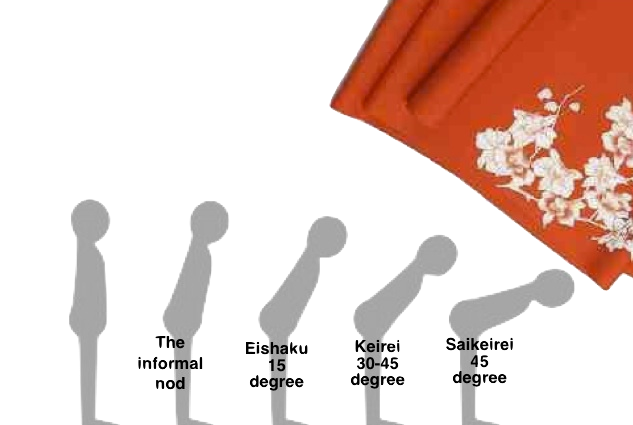- The outdoor beckons. North Face takes kids trekking in Hokkaido
- Exciting events happening in Yokohama
- The Salesman
- RICHARD THE STORK
- Logan 2017
- The Light Between Oceans
- HAROLD AND LILLIAN: A HOLLYWOOD LOVE STORY
- WHAT A WONDERFUL FAMILY 2 (KAZOKU WA TSURAI YO)
- Nikuon June 3 & 4
- Curry Festival 2017 at Yokosuka, June 3 & 4
- Stop by for beer and German sausages at Hibiya Park Oktoberfest 2017 (June 2-11)
- Japan’s next generation bicycle tires don’t need air
- Say Mother’s Day with a European style floral arrangement
- Award-winning short film ‘The Sad Monk’ in theatres
- Tokyo U-14 International Youth Football Tournament 2017
- Picnic Cafe Wangan Zoo Adventure
- Beauty and the Beast 2017
- Food delivery at hanami spots
- Fun events at Huis Ten Bosch This Spring!
The rules of bowing in Japan

The Japanese people are known to be polite in speech and action. Social etiquette is deeply ingrained into Japan’s culture. Did you know that bowing is considered very important that parents and teachers teach this gesture of respect from a very young age?
Bowing is known as ojiri, the most important body movement for the Japanese just as a handshake is to western people. Used in a wider range of context to show apology, express thanks, congratulations, ask for favors or bid people goodbye, this useful gesture has its four distinct rules.

Saikeirei (Deep bow)
This is a 90-degree bowing. It is practised in very formal settings and traditionally reserved for occasions to signal deep gratitude for a warm welcome, or profound apologies for grave misdoings. Done in a slow manner, it is also considered to be a social protocol by the members of the imperial family.
Keirei (mainstream bow)
Bending the body and head to a 30 to 45-degree angle or the ojigi is the mainstream bow. This is commonly used when meeting someone for the first time such as greeting your children’s teachers, friends or work colleagues.
Eshaku (light bow)
This is a light 15-degree bending commonly seen among work colleagues and people with close affinity. “Otsukaresamadeshita,” the verbal greeting between work colleagues at the end of a working day is commonly accompanied by a light bow.
The informal nod
The informal nod is a 5-degree slight bow commonly seen among friends of the same age or to people with lower ranks. Only do this bow to people that you have a close relationship with as this may be misunderstood as a brash manner.
Dos and donts
- Bows should be timed so that parties come up at the same time.
- During the encounter, the person of the lower status should bow first and lowest, holding the bow until the other person is done with his or hers. Example of a lower rank is client-salesman where client is higher and salesman is lower.

